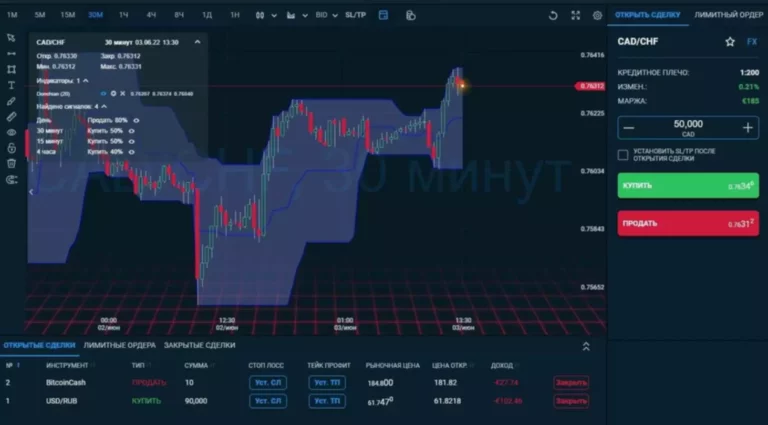The cycle stealing mode is used in a system the place the CPU cannot be disabled for the length of time required for the burst transfer mode. In the cycle stealing mode, the DMA controller obtains the access to the system bus through the use of the BR (Bus Request) and BG (Bus Grant) indicators, which are the identical because the burst mode. These two signals control the interface between the CPU and the DMA controller.
While DMA controllers could be incredibly effective at conserving energy or dashing up embedded methods, their implementation is not heavily standardized. There are a quantity of schemes for ensuring that inside bus access is not granted concurrently with the CPU. The objective of the bus entry scheme is primarily to avoid concurrent access to the identical memory locations, which may lead to cache incoherency and logical errors. A single DMA controller will usually be configured to make use of considered one of these schemes, since different hardware or firmware control may be required to use each of them. The bus access schemes used by most DMA controllers are burst, cycle-stealing, and clear DMA. Remote Direct Memory Access (RDMA) is one other memory entry methodology that permits two networked computers to exchange data in primary reminiscence with out relying on the CPU, cache or the working system of either laptop.
Dma Controller
Transparent DMA can solely execute a single operation at a time, however it should also await the processor to execute instructions in which it yields entry to the specified data or handle buses. Extra logic is required to confirm this access restriction, and this kind of DMA is usually the slowest. Transparent DMA could additionally be advantageous in applications the place one has additional processing to attempt this does not require entry to the reminiscence buses. The advantage on this case would be the elimination of throttling the CPU, since the processor doesn’t should cease operating utterly. This article explains the use cases, advantages, and drawbacks of utilizing direct memory entry (DMA) in embedded techniques programming. The article describes how DMA interacts with peripheral and memory modules for extra environment friendly operation of CPUs.

DMA is a technique where you can transfer reminiscence round with out involving the main CPU. This was an enormous win for old gaming hardware as an awful lot of time can be spent merely shuffling graphics knowledge across the display screen memory. Offloading this task to custom silicon meant the CPU had extra time to do much more attention-grabbing and computationally costly things. The precise copying itself may be carried out much more shortly too, that means smoother scrolling and so on. DMA describes the access of parts, aside from the CPU, on (a CPU’s) memory. Further info could be discovered on the corresponding Wiki page and subsequent to endless other assets on the internet.
How To Speed Up Peripheral Monitoring In Low Energy Wearables With Dma
The DMA controller blocks CPU operation for a very brief interval to move a big chunk of memory, after which relinquishes the bus back to the main CPU, repeating till the transfer is complete. On the one hand, within the cycle stealing mode, the data block transmission speed just isn’t as quick as in the burst mode, however however, the CPU idle time is not as long as within the burst mode. Without Direct Memory Access, when the CPU makes use of programmed inputs/outputs, it’s normally fully occupied during the whole read or write operation, so it can not perform other tasks. With DMA, the CPU first initiates the switch, then performs different operations while the switch is in progress, and eventually receives an interrupt from the DMA controller (DMAC) when the operation is full. DMA permits the CPU to be paused and/or disconnected from the reminiscence bus so that peripherals can directly read information from or write information to the reminiscence with out the involvement of the CPU. Thus, instead of the example given above, a disk controller might write its bytes on to reminiscence whereas the CPU waits, which is faster as a outcome of rather than “read byte then write byte” by the CPU there’s just “write byte” by the peripheral.
Many hardware techniques use DMA, together with disk drive controllers, graphics playing cards, community playing cards and sound cards. DMA can be used for intra-chip data switch in some multi-core processors. Computers which have DMA channels can transfer data to and from devices with a lot less CPU overhead than computers with out DMA channels. Similarly, a processing circuitry inside a multi-core processor can switch information to and from its native reminiscence without occupying its processor time, permitting computation and information switch to proceed in parallel. To carry out an input, output or memory-to-memory operation, the host processor initializes the DMA controller with a depend of the variety of words to transfer, and the memory tackle to make use of.
Each of your disk reads and writes, each transfer to your graphics or network card will often contain DMA. Back when DMA was frequent, the answer was usually “not a lot” — for example, under early variations of Windows, studying https://www.xcritical.com/ or writing a floppy disk (which did use the DMA controller) pretty much locked up the system for the duration. 8237 DMA Controller is a sort of DMA Controller which has a versatile number of channels but typically works on four Input-Output channels.
Direct Memory Access uses hardware for accessing the reminiscence, that hardware is recognized as a DMA Controller. It has the work of transferring the information between Input Output gadgets and major reminiscence with very much less interplay with the processor. The direct Memory Access Controller is a management unit, which has the work of transferring knowledge direct market access forex. Without a course of corresponding to DMA, the pc’s CPU turns into preoccupied with information requests from an attached gadget and is unable to perform different operations during that time.
Cache Coherency
Each time a byte of information is ready to be transferred between the peripheral system and the reminiscence, the DMA controller increments its inner handle register till a complete data block is transferred. These registers consist of a memory handle register, a byte depend register, and one or more control registers. One task that’s common for embedded systems is managing external input. Managing enter can put plenty of pointless computational strain on the processor, inflicting longer intervals in energetic energy modes and slow response times. For optimizing power, preserving fast responses to occasions, and managing large continuous information transfers, a microcontroller with direct memory entry (DMA) may offer the most effective resolution.
The EU’s DMA is a new take on tech regulation – TNW
The EU’s DMA is a new take on tech regulation.
Posted: Fri, 08 Mar 2024 08:00:00 GMT [source]
The clear mode takes the longest time to switch information blocks, but it is also probably the most environment friendly mode in terms of total system performance. In clear mode, the Direct Memory Access controller transfers knowledge only when the CPU performs operations that do not use the system buses. DMA channels ship information between an attached peripheral device and the system reminiscence.
Dma: How Does It Truly Occurs In Practice?
Programming DMA control might differ barely between protocols, but the peripheral transactions are managed completely by the DMA controller. An arbiter module controls the bus entry restrictions between the four DMA channels and the CPU, granting requests in accordance with a priority system. The page register was also rewired to handle the total sixteen MB reminiscence address area of the CPU.
In burst mode, the full data block is transmitted in a steady sequence. The unit communicates with the CPU via the information bus and management traces. Through the use of the tackle bus and permitting the DMA and RS register to pick inputs, the register within the DMA is chosen by the CPU.

Due to the limitation of executing one operation at a time, it’s typically slower than burst DMA. DMA is helpful in many digital techniques, and generally it’s even required to handle massive quantities of bus visitors. It has been used in network playing cards, graphics cards, and even a number of the original IBM PCs. That being said, incorporating DMA into a design does have some trade-offs. Direct Memory Access is useful whenever the CPU can’t keep up with the info transfer price, or when the CPU must carry out work while ready for comparatively slow I/O knowledge transfers. RDMA is beneficial in functions that require quick and massive parallel high-performance computing clusters and information heart networks.
They were supported to the extent they are required to support built-in legacy PC hardware on later machines. In cases where an original 8237s or direct compatibles were still used, transfer to or from these devices should be limited to the first sixteen MB of major RAM regardless of the system’s actual address space or quantity of installed reminiscence. An example of a burst DMA controller could be found on the MAX32660 (see Figure 4).
Nowadays, nevertheless, the reminiscence usually has considerably greater bandwidth than the I/O bus, so even while a peripheral is studying or writing reminiscence, there’s usually a fair quantity of bandwidth left over for the CPU to use. In addition, a modern CPU typically has a fair massive cache, so it can typically execute some instruction without utilizing main memory at all. Internally, a multichannel DMA engine is usually present within the device to carry out a quantity of concurrent scatter-gather operations as programmed by the software program. A modern x86 CPU might use greater than 4 GB of memory, both utilizing the native 64-bit mode of x86-64 CPU, or the Physical Address Extension (PAE), a 36-bit addressing mode. In such a case, a tool using DMA with a 32-bit tackle bus is unable to handle reminiscence above the 4 GB line. The new Double Address Cycle (DAC) mechanism, if carried out on each the PCI bus and the gadget itself,[7] allows 64-bit DMA addressing.

As an example, on an Intel Core-based PC, the southbridge will ahead the transactions to the memory controller (which is built-in on the CPU die) using DMI, which can in flip convert them to DDR operations and ship them out on the reminiscence bus. As a result, there are quite numerous steps involved in a PCI DMA switch; however, that poses little drawback, for the rationale that PCI device or PCI bus itself are an order of magnitude slower than the rest of the elements (see listing of system bandwidths). Direct Memory Access can be used for “memory to memory” to copy or move data in reminiscence. It can transfer costly memory operations (such as giant copies or scatter-gather operations) from the CPU to a dedicated DMA engine. DMA Controller is a hardware system that enables I/O units to directly entry reminiscence with less participation of the processor.
DMA Controller is a type of management unit that works as an interface for the data bus and the I/O Devices. As talked about, DMA Controller has the work of transferring the data with out the intervention of the processors, processors can management the data switch. DMA Controller additionally contains an address unit, which generates the handle and selects an I/O gadget for the switch of information. DMA allows devices — corresponding to disk drives, external memory, graphics cards, network playing cards and sound playing cards — to share and receive information from the main memory in a pc. In system applications involving peripherals, there are many points at which a microprocessor can turn out to be bottlenecked.
